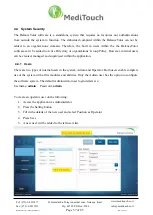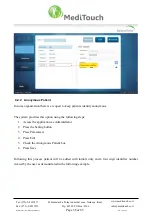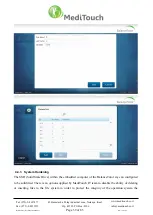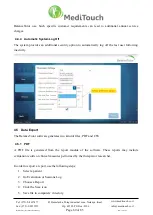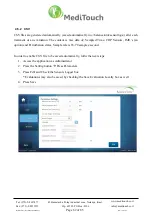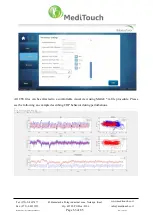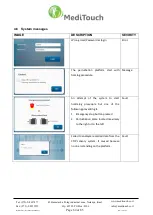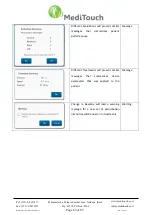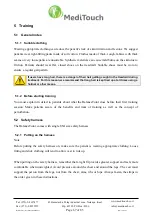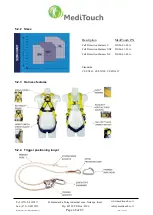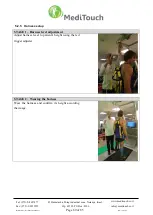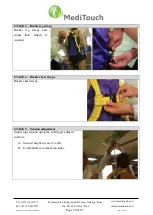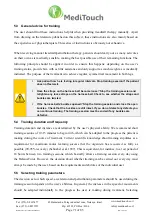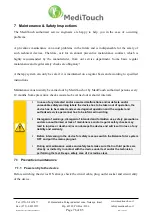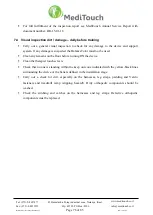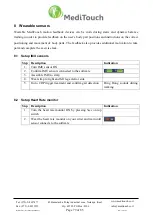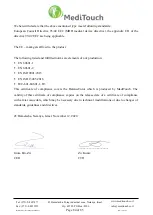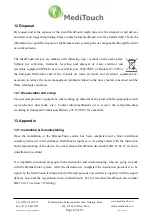
Page 71 of 85
www.meditouch.co.il
Tel: (972)-9-8637477
Fax: (972)-9-8852935
45 Hamelacha, Poleg industrial zone, Netanya, Israel.
Zip: 42505, PO Box: 8306
DO-15-01-02
BalanceTutor user manual 200824.doc
5.3 General advice for training
The user should find these instructions helpful when providing treadmill therapy manually. Apart
from drawing on the literature published on this subject, these instructions are also mainly based on
the experiences of physiotherapists. This series of instructions is obviously not exhaustive.
When receiving manual treadmill/perturbation therapy, patients should carry out as many activities
on their own as is medically sensible, making the best possible use of their remaining functions. The
following principle should be applied in order to ensure this happens: depending on the user’s
training status, provide him with as little assistance and only support as much weight as is medically
indicated. The purpose of the treatment is to achieve regular, symmetrical movement in both legs.
5.4 Training duration and frequency
Training duration and distance are determined by the user’s physical abil
ity. We recommend short
training sessions of 10-15 minutes to begin with, which can be adapted to the progress the patient is
making during the course of treatment. Current scientific knowledge about training stipulates as a
requirement for maximum motor learning success that the organism has recovered as fully as
possible (90-95% recovery) (Schnabel et al. 1997). This is equivalent, for instance, to a rest period of
18 hours between two training sessions, which basically allows a training session every day using
the BalanceTutor. However, the decision about whether training can be carried out every day must
always be made by the user, based on the requirements and abilities of the individual user.
5.5 Selecting training parameters
The decision as to which speed, acceleration and perturbation parameters should be used during the
training session depends on the user’s abilities. In general, the increase in the speed of movements
should be adapted individually to the progress the user is making during treatment. Selecting
Ask patient how he is feeling in regular intervals. Stop training session if the patient
does not feel well.
Have the straps on the harness belt become loose? Stop the training session and
retighten any loose straps on the harness belt. Check to see whether the straps and
buckles are twisted.
If the harness belt
s’
buckles opened? Stop the training session and close the open
buckles. Check that the buckles are still intact. If you do not detect any defects you
can continue training. The training session must be ended if any buckles are
defective.

